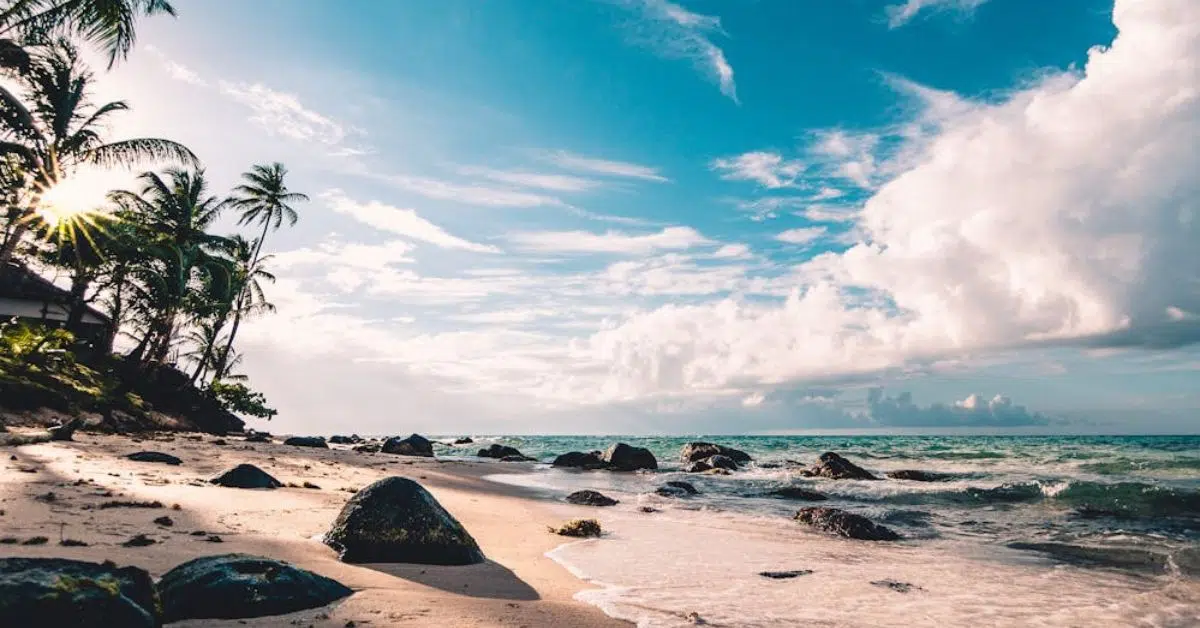Imagine yourself stuck on a deserted island. What would you need to stay alive and even enjoy yourself? This handy guide shows you the most important things to bring on your island adventure.
Introduction
Ever wished you could get away to a beautiful island, far from the busy world? What if that wish came true without fancy hotels or someone to bring you food? This guide will examine the big question. What would you take to a deserted island? We’ll uncover the most essential tools, smart tricks, and surprising comforts that could help you survive and live nicely on this lonely island. Whether you’re someone who loves adventure or likes to imagine it, get ready to learn about the fantastic world of surviving on a deserted island.
For more island travel information and guides, check the https://islandtraveltips.com/
1. Deserted Island Survival Kit Essentials
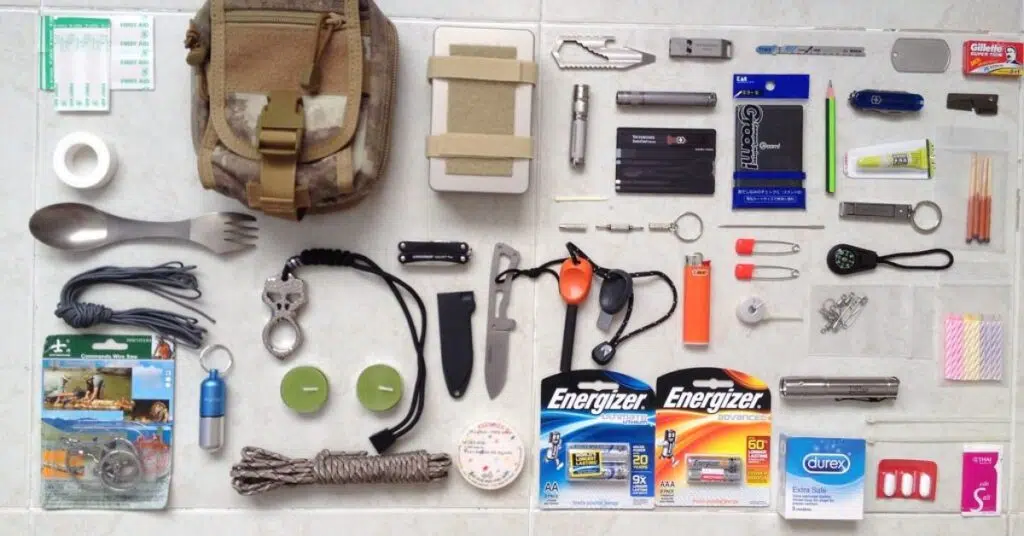
You’ll need the right stuff to survive if you’re stuck on a deserted island. It’s not about fancy gadgets. It’s about packing the things to help you stay alive and get rescued.
Water: You need clean water to live. Pack a water filter or tablets to ensure that any water you find is safe to drink. Bring something to carry water or even a tool to help you make clean water from sunlight.
Shelter: You need to stay safe from the weather. A small, waterproof tent or tarp will protect you from rain, sun, and wind. Remember to tie your shelter down with a strong rope and a warm sleeping bag or blanket.
Fire: Fire is super important. It would help if you had it to stay warm, cook food, make water safe, and signal for help. Bring waterproof matches, a lighter, or something to start a fire with, like flint and steel. Practice making fire before you go so you can do it even if you’re scared.
First Aid Kit: Accidents can happen, so be ready with bandages, wipes to clean cuts, pain medicine, tweezers, and any medicine you need to take regularly.
Tools: A knife or multi-tool helps cut, dig, or build things. Pick a strong knife that can also be used as a saw, pliers, or screwdriver.
Signaling: Pack a whistle, mirror, or flare gun to tell people where you are. Bring a few different things to signal for help, even if one doesn’t work.
Navigation: A compass and map (if you have one) can help you determine your location and navigate to safety. Learning a little about using the stars to find your way is also good.
Food: Pack food that goes smoothly quickly, like energy bars, jerky, or trail mix. This will give you energy until you find other food on the island.
Rope: Rope, paracord, or fishing line are super helpful. You can use it for almost anything: building, fishing, making traps, or even stopping bleeding in an emergency.
Attitude: The most important thing to bring is a good attitude and a strong desire to survive. Staying calm, focused, and clever will help you overcome this challenge.
Remember, this is just a starting point. What you pack depends on your specific needs and the island’s conditions. Choose items to help you find water, make shelter, start a fire, and stay safe.
2. Essential Gear for Deserted Island Survival
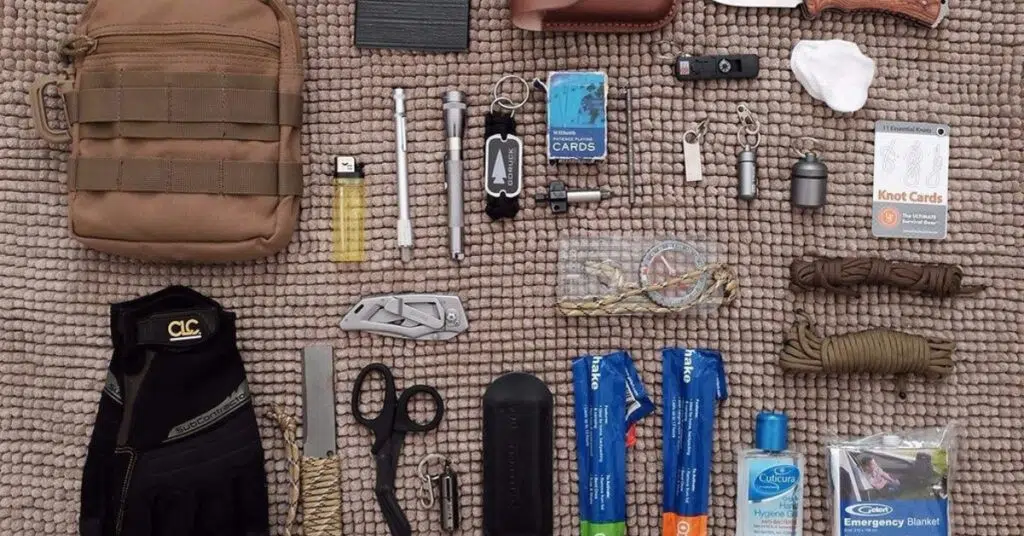
Living on a deserted island isn’t just about staying alive; it’s about making life a little easier and increasing your chances of getting rescued. Besides the basic stuff you need, it’s wise to pack some extra things that can make a big difference.
Fishing Gear: If there’s water around, fishing can provide food. Pack a fishing line, hooks, lures, or even a tiny fishing rod. You can also make a spear or net to catch fish.
Solar-Powered Charger: A small solar charger can keep your phone or GPS working. This is important if you can get a signal and need to talk to someone or find your way back.
Insect Repellent: Bugs can be annoying and make you sick. Pack something to keep bugs away so you don’t get bitten.
Sun Protection: The sun is intense on an island. Bring a hat, sunglasses, and sunscreen to protect yourself from getting burned or too hot.
Cooking Pot or Pan: A light pot or pan helps boil water, cook food, and even melt snow for drinking.
Water Filter Straw: A small water filter is good if you need to drink water while exploring the island.
Duct Tape: This strong tape can fix almost anything! It can repair things, cover holes, make bandages, and even start a fire.
Entertainment: Being alone can be challenging. Bring a book, some cards, or a small instrument to keep yourself busy and happy.
Waterproof Container: A container that keeps things dry, which can store important things, such as food, or even collect rainwater.
Seeds: If you will be on the island for a while, bring some seeds of plants that grow fast and are safe to eat. This can give you more food in the future.
Remember, these bonus items are to make your life on the island easier, not to take the place of the essential stuff you need to stay alive. Think about how much you can carry before packing any extras. And make sure to choose things that will be useful on your specific island.
3. Must-Have Items for Stranded on a Deserted Island
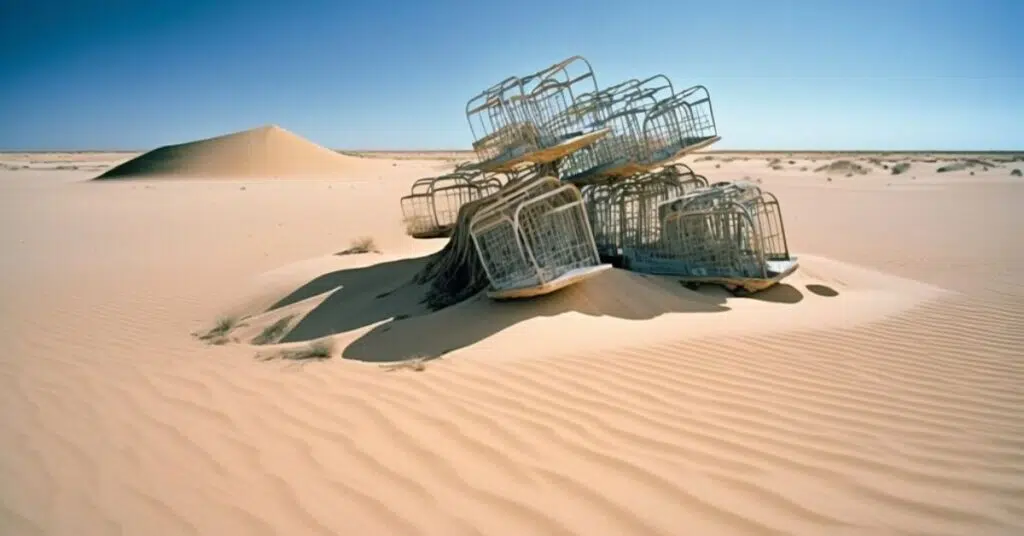
You’re about to embark on an unexpected journey to a deserted island. No worries! This list covers everything you need to survive and have a unique island adventure. Remember, everything you pack should be chosen for a reason: to help you stay safe and sound on your new island home.
Essentials:
- Water: Water filter or purification tablets, portable water containers, or solar stills.
- Shelter: Lightweight, waterproof tarp or tent, sturdy rope, sleeping bag, or emergency blanket.
- Fire: Waterproof matches, lighter, firestarter (flint and steel).
- First Aid Kit: Bandages, antiseptic wipes, pain relievers, tweezers, and personal medications.
- Multi-Tool or Knife: A sturdy knife with multiple functions (saw, pliers, screwdriver).
- Signaling Device: Whistle, mirror, flare gun.
- Navigation Tools: Compass, map (if available), knowledge of celestial navigation.
- Food: High-calorie, non-perishable food (energy bars, jerky, trail mix).
- Cordage: Rope, paracord, fishing line.
- Mental Fortitude: Positive attitude, determination, and resourcefulness.
Additional Gear:
- Fishing Gear: Fishing line, hooks, lures, collapsible fishing rod, spear, or net.
- Solar-Powered Charger: Portable solar charger for phone or GPS device.
- Insect Repellent: To prevent bites and diseases.
- Sun Protection: Wide-brimmed hat, sunglasses, sunscreen.
- Cooking Pot or Pan: For boiling water, cooking, melting snow.
- Water Purification Straw: Personal water filter for on-the-go purification.
- Duct Tape: A versatile tool for repairs, patching, and first aid.
- Entertainment: Book, deck of cards, musical instrument.
- Waterproof Container: For storing valuables, food, or collecting rainwater.
- Seeds: Of fast-growing, edible plants for long-term survival.
Optional Items (Depending on Your Situation):
- Portable Hammock: Lightweight and comfortable for sleeping off the ground.
- Binoculars: Binoculars are used to spot potential food sources or rescue vessels.
- Hand-Crank Radio: To receive news or potential rescue signals.
- Waterproof Notebook and Pencil: For journaling, making notes, or drawing maps.
- Personal Hygiene Items: Toilet paper, soap, toothbrush, toothpaste.
This list is just a helpful guide, not a set of rules written in stone. You can change it depending on where your island is, how long you think you’ll be stuck there, and what you need. Be smart, pack well, and most importantly, never lose hope! You’ve got this.
4. Deserted Island Survival Tools and Equipment
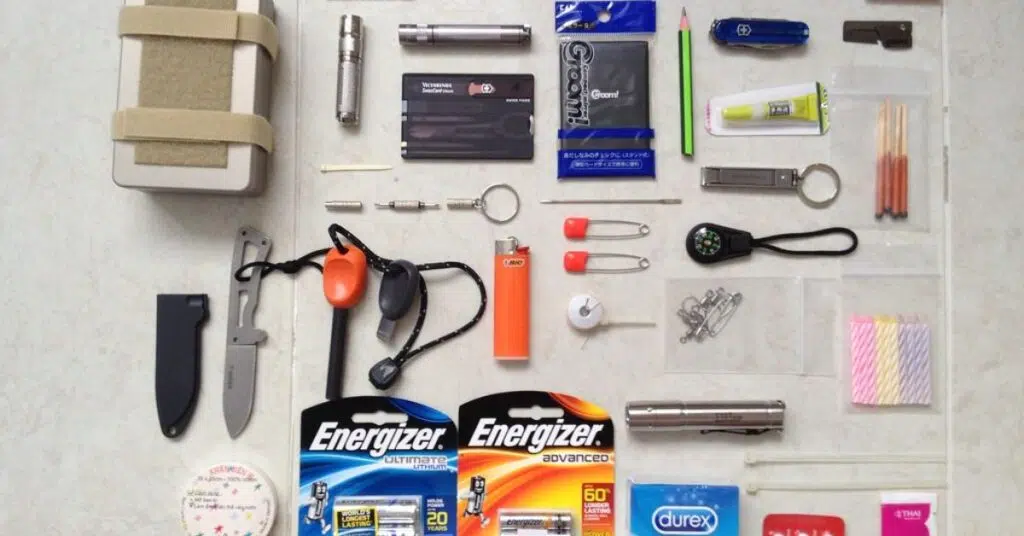
Having the right tools can make your island adventure way easier. They’ll help you build a shelter, hunt for food, signal for help, and tackle various tasks. Pick tools that can do more than one thing to save space and weight in your pack.
- Axe or Machete: You want a sturdy chopping tool. It’ll come in handy for clearing paths, chopping firewood, building your shelter, and even protecting yourself. An axe is excellent for big jobs, while a machete is lighter and easier for smaller tasks.
- Saw: A small, folding saw is perfect for cutting branches and small trees for building or firewood. Pick one with a rigid blade that can cut through tough wood.
- Shovel or Trowel: You’ll need something to dig with for making a fire pit, burying trash, or digging a latrine. A small trowel is usually all you need.
- Hammer and Nails: A little hammer and a few nails are surprisingly handy. You can use them to build your shelter, fix things, or even create simple tools.
- Pliers: Pliers are like a Swiss Army knife of tools. You can use them to fix gear, get splinters out, or even take hooks out of fish.
- Wire: A roll of strong wire is super helpful. You can use it to make traps, repair gear, or even build a grill for cooking.
- Waterproof Tarp: A big tarp is like a multi-purpose wonder tool. You can use it to build a shelter, collect rainwater, or signal for help.
- Magnifying Glass: A magnifying glass can help you start a fire when the sun is out. You can use it for small things like removing splinters or checking out plants.
- Sewing Kit: A basic sewing kit can repair clothes, make small bags, or even fashion a fishing net.
- Water Container: A large, sturdy container is a must for storing rainwater or any other clean water.
Remember, these tools are meant to help you, but you still need to know what you’re doing. Practice using them before you find yourself on an island. Choose tools that are strong, lightweight, and easy to care for. That way, you’ll be ready for anything your island adventure throws.
5. Ultimate Deserted Island Packing List

Getting ready for a deserted island is like packing for the ultimate adventure. You’ll need the essentials to keep you alive, some handy tools to make life easier and help you find food and water, and a few little extras to keep your spirits up. Here’s a list of everything you want to bring to be ready for whatever the island throws your way.
Survival Must-Haves:
- Water: Filter or purification tablets, portable container, solar still.
- Shelter: Tarp or tent, rope, sleeping bag/emergency blanket.
- Fire: Waterproof matches, lighter, firestarter.
- First Aid: Bandages, antiseptics, pain relievers, personal meds.
- Tools: Multi-tool or knife, axe/machete, saw, shovel/trowel.
- Signaling: Whistle, mirror, flare gun.
- Navigation: Compass, map (if available).
- Food: High-calorie, non-perishable items.
- Cordage: Rope, paracord, fishing line.
- Mental Strength: Positive attitude, determination, resourcefulness.
Enhancing Your Experience:
- Fishing Gear: Line, hooks, lures, rod, spear, or net.
- Solar Charger: For phone or GPS.
- Insect Repellent: To ward off pests.
- Sun Protection: Hat, sunglasses, sunscreen.
- Cooking: Pot or pan.
- Water Straw: For on-the-go purification.
- Duct Tape: The ultimate fix-it-all tool.
Personal Touch:
- Entertainment: Book, cards, music.
- Journal and Pen: This is for recording your experiences.
- Photos of Loved Ones: For comfort and motivation.
- Small Comfort Item: A favorite trinket or piece of jewelry.
- Survival Guide: A pocket-sized manual with useful tips.
Additional Considerations:
- Clothing: Lightweight, breathable, quick-drying fabrics.
- Footwear: Sturdy hiking boots or shoes.
- First Aid Manual: To refresh your knowledge.
- Whistle: For signaling or deterring animals.
- Sunglasses: To protect your eyes from the sun.
Remember, this is a suggested list. Tailor it to your needs and the island’s environment. Prioritize items that address your basic needs for water, shelter, fire, and safety. Then, add items that can make your stay more comfortable and increase your chances of rescue. And remember those personal touches to remind you of home and keep your spirits up during this challenging adventure.
6. How to Survive on a Deserted Island with Limited Supplies
So you’re stuck on a deserted island with barely anything? Don’t stress! Use your brain and get creative – that’s how you’ll make it out. It won’t be a walk in the park, but learning to use the things around you can be a lifesaver.
First Things First:
- Water: This is the most important thing. Find a stream, river, or rainwater to drink. If there isn’t any fresh water, try catching dew or making a simple tool to get drinkable water from the ocean.
- Shelter: Look for a cave or something to hide under. If you can’t find one, build a shelter using branches, leaves, or whatever you can find.
- Fire: If you can make a fire, do it! Fire can make water safe to drink, cook food, keep warm, and let people know where you are.
- Food: Look for plants, fruits, and bugs you can eat. Learn which ones are good for you. You can also try fishing or building traps to catch small animals.
Use What’s Around You:
- Tools: Find sharp rocks or shells to use as knives. Use branches to make spears or digging tools.
- Rope: You can weave vines, palm leaves, or strips of bark into rope for building, fishing, or tying things up.
- Containers: Use big shells, hollowed-out gourds, or pieces of bamboo to hold water, cook food, or carry your stuff.
Get Creative:
- Learn from nature: See how the animals and plants on the island live. You can learn a lot about how to survive by watching them.
- Try new things: Be bold and experiment. See what works best for you by trying different things with different materials.
- Be patient: Surviving takes time and effort. Stay calm if things go perfectly. Stay positive and keep working hard.
Remember, the key is to be flexible. Be creative and use what you have and what you can find on the island. By staying calm, intelligent, and willing to change, you’ll increase your chances of getting through this and making it home safely.
7. Deserted Island Survival Tips and Tricks
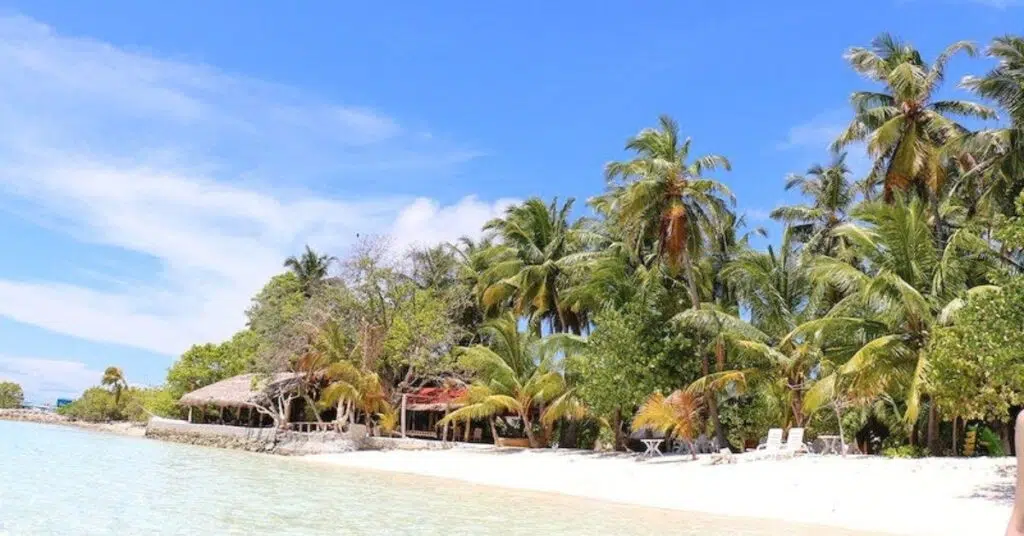
Surviving on a deserted island takes more than luck – it’s about using your head and getting creative! Here are some tips to help you stay safe and sound until you’re rescued:
Water: Look for rivers or streams, but if you can’t find any, try collecting morning dew with a cloth or digging a hole near the beach for filtered saltwater.
Shelter: Find a cave or build your shelter using branches and leaves. Keep it off the ground to avoid flooding and bugs.
Fire: If you don’t have matches, try rubbing two sticks together to make a spark. Look for dry stuff like coconut husks, bird nests, or wood shavings to help get your fire going.
Food: Learn about the plants and fruits you can eat on the island. You can also use a spear or fishing line to catch fish or build traps for small animals. Just remember to cook anything you see to stay healthy.
Finding Your Way: Watch the sun to determine which way is east and west. At night, the North Star will point you north. Please get to know the island so you can stay aware of it.
Bug Spray: Rub crushed mint or other smelly plants on your skin to keep bugs away. You can also burn dried herbs to keep mosquitoes away.
First Aid: Learn to treat cuts, burns, and bites. Use plants like aloe vera for sunburns or plantain for bug stings.
Getting Help: Use rocks or branches to make a big SOS sign on the beach. You can also use a mirror or anything shiny to flash sunlight and catch the attention of passing ships or planes.
Mental Health: Stay positive and keep yourself busy with survival tasks. Write in a journal to keep track of your thoughts and feelings. Find ways to have fun, like singing, making art, or exploring the island.
Save Your Energy: Work sparingly, especially when it’s hot. Do things when it’s cooler, and rest when necessary.
Remember, being calm, intelligent, and adaptable will help you overcome this. Use these tips, and you’ll be one step closer to being safe and sound when returning home!
8. DIY Survival Tools for a Deserted Island

Resourcefulness becomes your most valuable asset when stranded on a deserted island. With creativity and the island’s natural materials, you can craft essential tools to survive. These DIY tools might be simple, but they’ll do the job and prove that human ingenuity knows no bounds.
- Stone Tools:
- Knives and Scrapers: Search for sharp-edged rocks like flint or obsidian. Carefully chip away at them to create cutting edges for knives, scrapers, and arrowheads.
- Hammers and Axes: Find sturdy rocks with flat surfaces for hammering and pounding. Attach them to a handle using vines or cordage for more leverage.
- Digging Tools: Look for flat, sturdy bones or shells that can be sharpened and used as digging tools for finding roots, grubs, or burrowing animals.
- Wood Tools:
- Spears and Harpoons: Sharpen strong branches or bamboo stalks to create spears for hunting fish or small animals. You can even attach a barb made from bone or shell for better grip.
- Bows and Arrows: Find a flexible branch for the bow and straight, sturdy sticks for the arrows. Fashion fletchings from feathers or leaves create arrowheads from sharpened stones, bones, or shells.
- Fire Drill: Use a hardwood stick as the spindle and a softer wood block as the fireboard. Rub the spindle against the fireboard to create friction and ignite the fuel.
- Containers: Hollow out bamboo or large gourd sections to create containers for storing water, carrying food, or cooking.
- Plant-Based Tools:
- Cordage: Harvest fibers from vigorous plants like yucca, agave, or coconut husks. Braid or twist them together to create rope, fishing line, or sewing thread.
- Baskets and Mats: Weave palm fronds, reeds, or grasses to create baskets for carrying food, supplies, or mats for sleeping or shelter.
- Natural Bandages: Use the soft, absorbent fibers of plants like moss or cattails to create bandages for wounds or burns.
- Other Materials:
- Shell Tools: Large shells can be sharpened into knives, scrapers, or spoons.
- Bone Needles: Use sharpened bones or fish spines to create needles for sewing or repairing clothing.
- Fishhooks: Fashion fishhooks from thorns, sharp bones, or even bent nails if you find any.
These are just some ideas to get you started. There are a ton of ways to survive on a deserted island. Be creative, use what you can find, and don’t be afraid to try new things! The key is to use your noggin and think outside the box.
9. Long-Term Survival Strategies for Deserted Islands
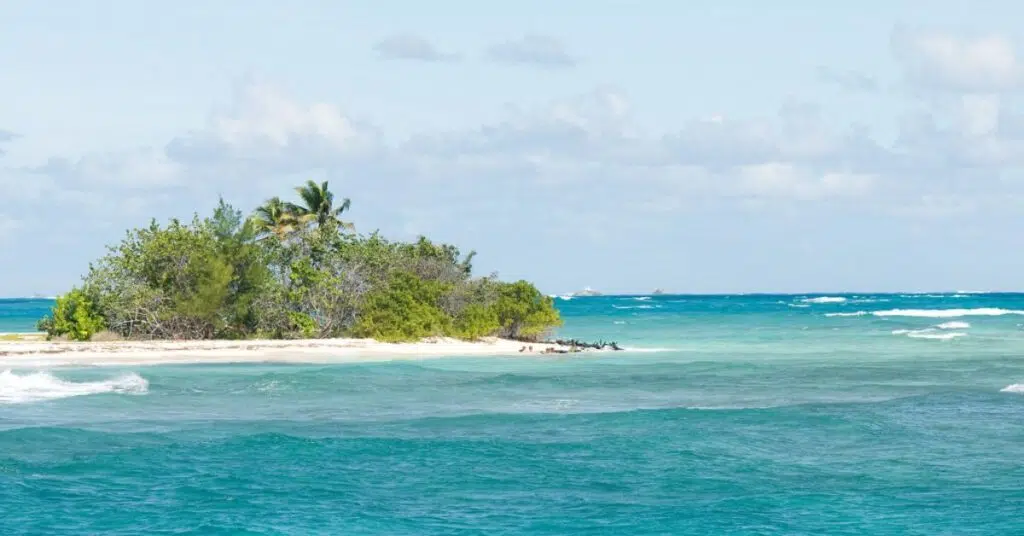
Being stuck on a deserted island is more than getting through the first few days. It’s about figuring out how to live there for a while and ensuring you get rescued. This means finding ways to get food and water regularly and ensuring you have an excellent place to stay. It also means taking care of your mind and body.
Food:
- Gardening: If you have seeds or find plants you can eat, start a garden. Over time, this will give you food. Learn which plants are safe to eat and take care of them.
- Animal Traps: Make traps to catch small animals, such as birds, fish, or mice. These can supplement your diet.
- Fishing: If you’re near water, fishing can be an excellent way to get food. You can make fishing lines and hooks from things on the island or use any fishing gear you bring.
Water:
- Collect Rainwater: Find a way to collect rain when it falls. You can use a tarp, big leaves, or dig a hole underground to find water.
- Clean Water: Learn how to clean water by boiling it, using the sun, or filtering it to ensure it’s safe to drink.
Shelter:
- Make Your Shelter Stronger: Make your shelter better over time. Add more layers to keep it warm, make a strong roof, and raise the place where you sleep so it doesn’t get wet or buggy.
- Fire Pit: Make a special place for your fire so it’s easier and safer to cook food, clean water, and signal for help.
- Storage: Organize your stuff and make places to keep it safe from the weather and animals.
Staying Healthy:
- Routine: Make a plan for what you do each day. This will help you feel normal and avoid boredom.
- Exercise: Move your body to stay healthy and strong. Walk, swim, or do other things that make you use your muscles.
- Mental Health: Read, write, play games, or explore the island to keep your mind sharp and happy.
- Talk to Others: If you’re with others, talk to them and work together. If you’re alone, find ways to think about things and take care of yourself.
If you’re stuck on a deserted island for a while, you must plan, be okay with changes, and learn new things. If you can find ways to get what you need and take care of yourself, you won’t just survive – you’ll have a good life, even when things are hard.
10. Finding Food and Water on a Deserted Island
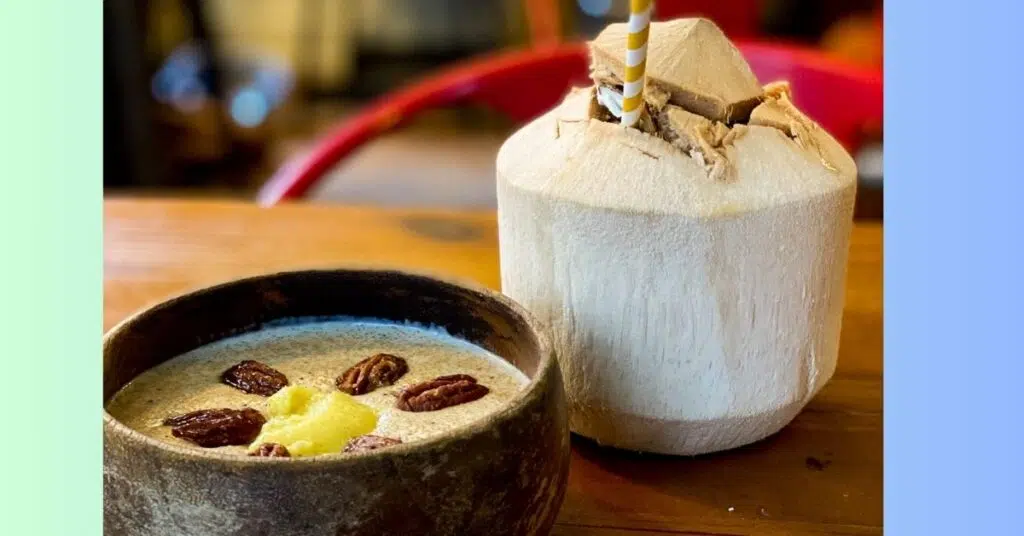
Finding food and water is super important when stuck on a deserted island. The good news is that even the most empty-looking islands usually have things you can use to eat and drink if you know how.
Water:
- Catch Rainwater: If it rains a lot, find a way to collect it. Use tarps, big leaves, or anything else you can find. You can even dig a hole and put something in it to make a well.
- Streams and Springs: Look around the island for natural places where fresh water comes from the ground. If you find any, boil or filter the water to ensure its safety.
- Dew: In the mornings, when there’s a lot of dew, you can collect the water with a cloth or tarp and squeeze it into something to drink.
- Coconuts: Coconut water is good for you. If you find coconuts, learn to open them safely and drink the water inside.
Food:
- Plants: If you can, learn about the plants on the island before you go. Find out which plants, berries, fruits, and nuts you can eat. Be careful, though, because some plants can make you sick. Don’t eat anything you don’t know what it is.
- Fishing: If there’s water nearby, fishing can help you get food. Use a fishing line and hook if you have them, or make something to fish using vines or sharp sticks.
- Trapping: Use rocks, branches, and vines to build easy traps to catch small animals like mice, lizards, or birds.
- Insects: Though they might not seem tasty, bugs can benefit you. Look for things like grubs, ants, or termites. Cook them well before you eat.
Remember:
- Be Safe: Don’t eat anything you need clarification on. If you feel sick after eating something from the island, get help immediately.
- Cook Your Food: Always cook wild food to eliminate harmful germs.
- Make Your Food Last: If you don’t have much food, make it last as long as possible.
If you use these tips and stay safe, you can find plenty of food and water on the island. Be patient, use your head, and avoid trying new things. That’s how you’ll make it through and even do well in this challenging situation.
11. Building Shelter and Finding Resources on a Deserted Island
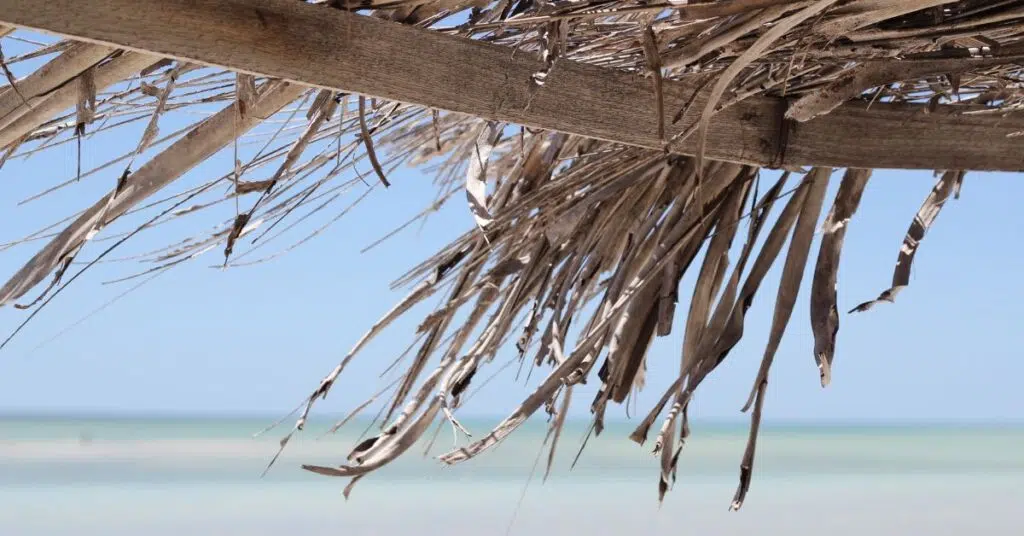
Having a place to stay is super important on a deserted island. A good shelter will protect you from the weather, give you a place to rest, and make you feel safe in a new place. It can also be your home base while you look for things you need on the island.
Making Your Shelter:
- Place: Pick a dry, flat spot that’s not too windy. Don’t build where it might flood or things could fall on you. Try to build near fresh water and places where you might find food.
- Things to Build With: Find things on the island, like branches, leaves, vines, and grass, to build your shelter. Big leaves from palm trees and bamboo make roofs in hot places. If you have a tarp or a piece of plastic, use it to keep the rain out.
- Design: You can build different kinds of shelters: one that leans against something, one with a roof shaped like a triangle, or even a small hut. It depends on the weather and what you can find to build with. The most important thing is to have a roof to keep the rain off you and a floor to keep you warm and dry.
- Warmth: To keep your shelter warm, put dry leaves, grass, or moss inside. This will help keep the temperature inside nice and make you more comfortable.
Finding Things You Need:
- Water: Look for fresh water in streams, springs, or ponds. If you can’t find any, collect rain or dew. You can also try digging a well if the water is near the ground.
- Firewood: To start a fire, get dry wood, twigs, and small pieces of wood. You can find wood on the beach, but ensure it’s dry before use.
- Plants to Eat: Look around the island for plants, berries, fruits, and nuts that are safe to eat. Be careful and only eat what you know is okay.
- Building Stuff: Look for solid branches, vines, bamboo, and palm leaves to build more shelters, tools, or things to sit on.
Using Things Wisely:
- Don’t Waste: Use everything carefully and use only a little.
- Use Things in New Ways: Get creative and find different ways to use things.
- Explore: Go to different parts of the island to find new things and places to get food.
- Pay Attention: Look for signs of animals or birds, which might show you where to find food or water.
Building a shelter and finding things you need are essential for living on a deserted island. Using your imagination and getting used to your new home, you can make a comfy place to live, even in a tough spot.
12. Mental Health and Staying Positive on a Deserted Island
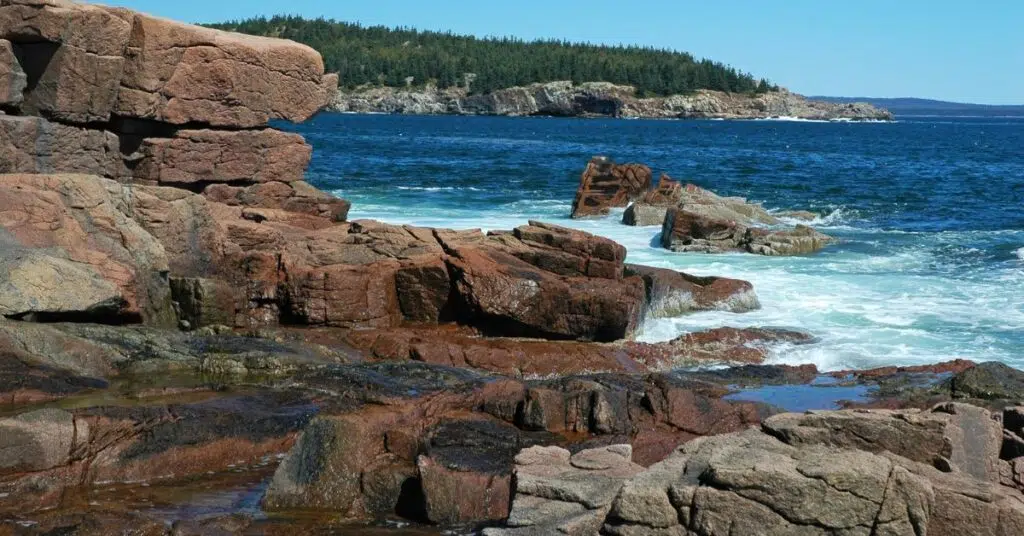
Being stuck on an island is hard on your body and your mind. You might feel lonely, scared, and stressed out about surviving. Staying positive and taking care of your mind can make a huge difference.
1. It’s Okay to Feel: This situation is challenging, so feeling down is okay sometimes. Don’t try to pretend everything’s fine. Focus on what you can do right now.
2. Focus on What You Can Do: You can’t control everything, so don’t waste energy worrying. Instead, focus on the things you can control, like your actions and attitude.
3. Make a Daily Plan: Plan your day as normal. This will help you feel more normal and give you goals to work towards. Include things like finding food and water, fixing your shelter, and trying to signal for help.
4. Set Small Goals: Break big goals into smaller, easier ones. Checking things off your list feels good and keeps you motivated.
5. Take Care of Your Brain:
Focus on the Now: Take a few minutes each day to just be present. Use your senses to feel calm. Pay attention to your senses. What do you notice, hear, smell, touch, and taste? This can help you feel calm.
Look for the Good: Even in a tough spot, there are always good things to notice. Pay attention to the beautiful things around you. *
Have Some Fun: Seriously, laugh a little! Find ways to enjoy yourself, even just singing or telling yourself jokes.
6. Stay Connected:
If you’re with others, Talk openly, help each other out, and work together as a team.
If You’re Alone: Talk out loud to yourself, sing, write in a journal… anything to keep your brain busy and fight off loneliness. *
Find a Project: Keep yourself busy with something that makes you feel good. It could be building a better shelter, exploring the island, or writing down your adventures.
Remember, your mind is just as important as your body for survival. Look after your brain, and you’ll be stronger and more capable of handling whatever comes your way. Stay positive, never give up hope, and rescue will be that much closer!
13. Signaling for Rescue from a Deserted Island
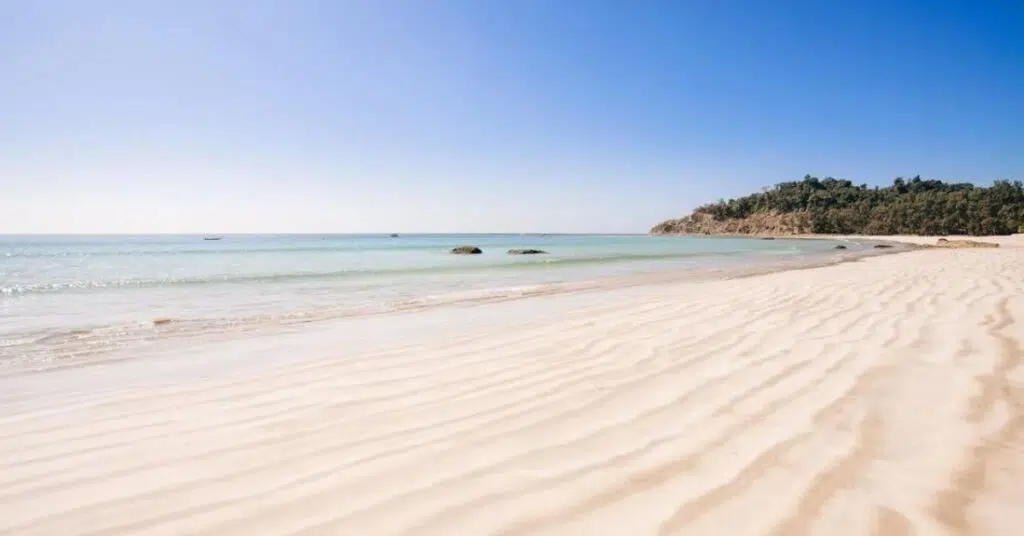
Getting rescued is the most important thing when you’re stuck on a deserted island. There are different ways to signal for help so that people on ships, planes, or rescue teams can find you.
Things you can see:
- Smoke Signals: Burn wet leaves or plants to make a lot of smoke. The smoke will go high in the sky, and people can see it afar.
- SOS: Use rocks, branches, or anything that changes color on the beach to make big letters that say SOS. Make the letters at least 10 feet tall to be seen from the air.
- Shiny Things: Use a mirror, shiny metal, or anything that reflects light to shine sunlight towards the horizon. People can see reflected light from far away.
- Flares: If you have flares, only use them when you see a boat or plane that might be able to help. Shoot the flare up high so it’s easy to see.
Things you can hear:
- Whistle: Blow a whistle three times quickly. This is a way to tell people you need help, and they can hear it from far away.
- Yelling: Shout for help occasionally, especially if you hear or see a plane or boat.
- Bang on Metal: If you have metal tools or containers, bang them together to make a loud noise.
Other Tips:
- Keep Signaling: Don’t stop signaling, even if no one comes immediately. Make a schedule and send signals regularly.
- Go High: If you can, go to a high place so your signals can be seen better.
- Clear the Area: Make sure nothing is blocking your signals, like plants or trees.
- Be Ready: Have your stuff ready to go and ensure you’re easy to see when someone rescues you.
Remember, signaling for help is essential. Don’t get sad if no one comes right away. Keep trying, and keep hope. What you do might be the thing that brings you home safely.
14. Real-Life Stories of Deserted Island Survival

Some people have lived on deserted islands, just like in the movies! Their stories show how strong and intelligent humans can be. They had to deal with challenging situations but found ways to live and do well on these islands. One famous story is about Alexander Selkirk, a sailor who lived alone on an island for over four years. His story inspired the book “Robinson Crusoe.” There are more recent stories, too! A fisherman named José Salvador Alvarenga floated on the ocean for 13 months after his boat broke. He ate fish and drank rainwater to survive. In 2014, three men were lost at sea for 50 days. They survived by eating fish they caught with their hands and drinking rainwater. Another sailor, Philip Ashton, was stuck on an island for 18 months in 1722. He ate shellfish and plants and even built a boat to escape! What can we learn from these brave people?
- Be creative: They had to make tools and find food using only what was on the island. This shows we can find solutions even in very bad situations.
- Please don’t give up: These people survived because they didn’t lose hope. Even when things were tough, they believed they would make it.
- Be able to change: To survive on a deserted island, you need to learn to live with what you have. This can help when things get complicated.
- Have hope: Never think you’re entirely out of luck. Many people stuck on islands believed they would be saved, which helped them keep going. These stories show us that people can survive even when things seem impossible. We can learn from these brave people and find ways to face our problems, no matter what.
Conclusion
Going to a deserted island? What to bring for fun and safety!
Imagine being stuck on a deserted island – what would you take? The right things can make your stay awesome, not scary. Think about tools to stay safe and things to make you happy.
Remember: Every island is different. Think about what you’re good at, what you like, and what problems you might face. Get ready for anything, pack smart, and see how strong you can be!
What would you take to your island paradise?
FAQs
1. What are the absolute essentials for surviving on a deserted island?
The most important things are clean water, shelter, fire, and a first aid kit. These will ensure you have the basics to stay alive and healthy while you figure out your next steps.
2. How can I find food and water on a deserted island?
Look for freshwater sources like streams or ponds, collect rainwater, and learn to identify edible plants. You can also try fishing or building traps to catch small animals.
3. What if I don’t have any tools or supplies with me?
Get creative! Natural materials like rocks, branches, and vines can be used to build shelters, create tools, and even light fires.
4. What should I do if I get injured or sick?
Learn how to treat common injuries with a basic first aid kit. If you become seriously ill, signal for help and make yourself visible.
5. How can I signal for rescue?
Build significant SOS signals on the beach, use a mirror to reflect sunlight, build a fire, or blow a whistle in three short bursts.
6. How can I stay positive and maintain my mental health?
Create a routine, set small goals, and find activities to keep yourself busy. If you’re with others, work together and support each other. If you’re alone, stay connected to yourself through journaling or meditation.
7. What common mistakes do people make when surviving on a deserted island?
Being prepared can help you stay calm, focus on what’s essential, pace yourself with food and drinks, and ask for help when needed.
8. Can I survive on a deserted island?
Absolutely! Many have survived on deserted islands for weeks, months, or even years. With the proper knowledge, skills, and mindset, you can too.
